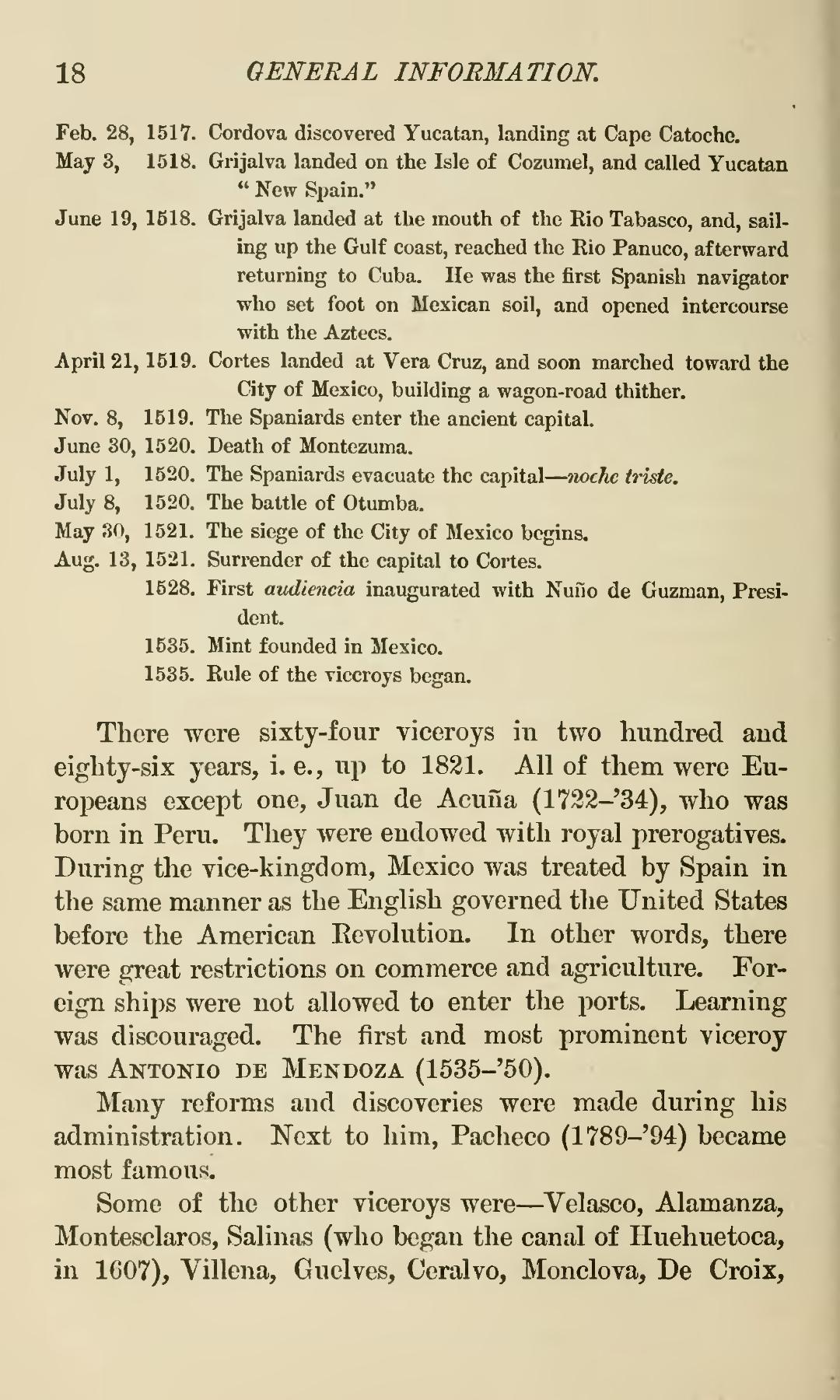| Feb. 28, 1517. | Cordova discovered Yucatan, landing at Cape Catoche. | |
| May 3, 1518. | Grijalva landed on the Isle of Cozumel, and called Yucatan "New Spain." | |
| June 19, 1518. | Grijalva landed at the mouth of the Rio Tabasco, and, sailing up the Gulf coast, reached the Rio Panuco, afterward returning to Cuba. He was the first Spanish navigator who set foot on Mexican soil, and opened intercourse with the Aztecs. | |
| April 21, 1519. | Cortes landed at Vera Cruz, and soon marched toward the City of Mexico, building a wagon-road thither. | |
| Nov. 8, 1519. | The Spaniards enter the ancient capital. | |
| June 30, 1520. | Death of Montezuma. | |
| July 1, 1520. | The Spaniards evacuate the capital—noche triste. | |
| July 8, 1520. | The battle of Otumba. | |
| May 30, 1521. | The siege of the City of Mexico begins. | |
| Aug. 13, 1521. | Surrender of the capital to Cortes. | |
| 1528. | First audiencia inaugurated with Nuño de Guzman, President. | |
| 1535. | Mint founded in Mexico. | |
| 1535. | Rule of the viceroys began. |
There were sixty-four viceroys in two hundred and eighty-six years, i. e., up to 1821. All of them were Europeans except one, Juan de Acuña (1722-'34), who was born in Peru. They were endowed with royal prerogatives. During the vice-kingdom, Mexico was treated by Spain in the same manner as the English governed the United States before the American Revolution. In other words, there were great restrictions on commerce and agriculture. Foreign ships were not allowed to enter the ports. Learning was discouraged. The first and most prominent viceroy was Antonio de Mendoza (1535-'50).
Many reforms and discoveries were made during his administration. Next to him, Pacheco (1789-'94) became most famous.
Some of the other viceroys were—Velasco, Alamanza, Montesclaros, Salinas (who began the canal of Huehuetoca, in 1607), Villena, Guelves, Ceralvo, Monclova, De Croix,
